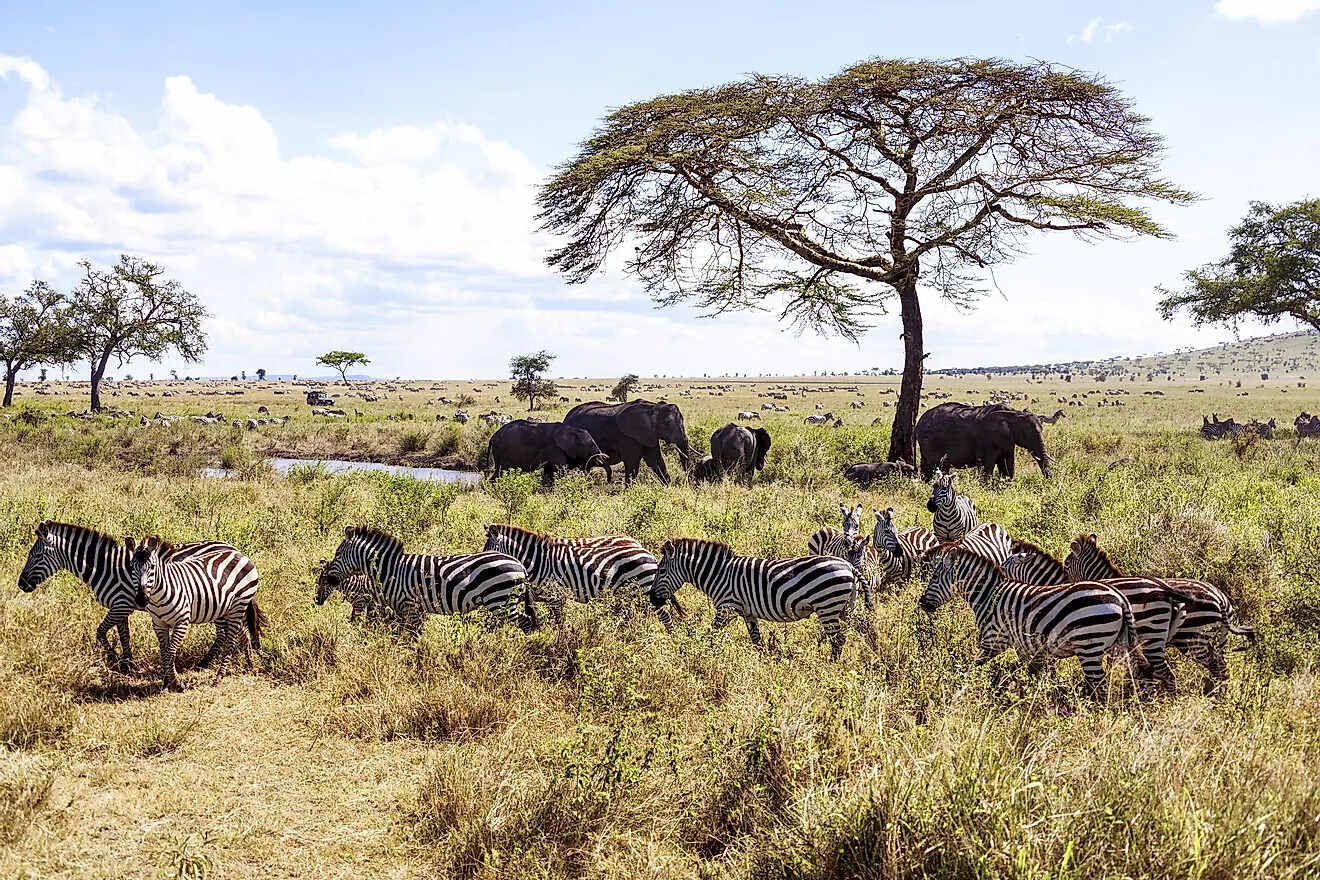
Ever wondered what makes grasslands such fascinating ecosystems? Well, you're about to find out! Grasslands, sprawling across continents, are not just vast expanses of green; they're vital for our planet's health and biodiversity. From the savannas of Africa to the prairies of North America, each grassland biome holds secrets and surprises that keep scientists and nature lovers intrigued. Grasslands are ecosystems where grasses dominate the vegetation. They play a crucial role in supporting a variety of life forms, influencing climate patterns, and even shaping human cultures. Ready to graze through some amazing facts about these ecosystems? Let's jump right in and discover what makes grasslands truly remarkable.
Key Takeaways:
- Grassland biomes are vital for the planet, storing carbon, preventing erosion, and supporting diverse wildlife. Protecting them is crucial for biodiversity and our well-being.
- Grasslands provide essential services to humans, including food production, medicinal plants, and water filtration. They play a key role in climate stability and our everyday lives.
What is a Grassland Biome?
Grassland biomes are vast expanses of land dominated by grasses. They exist on every continent except Antarctica and play a crucial role in the ecosystem. Grasslands are known for their rich soil, diverse plant and animal life, and significant agricultural value. They are often situated between forests and deserts, serving as a transition zone that supports a variety of life forms.
Types of Grasslands Around the World
Grasslands come in several types, each with unique characteristics and climates. Savannas are found near the equator and have a warm temperature year-round, with a distinct dry and rainy season. Temperate grasslands, which include the prairies of North America, have hot summers and cold winters with moderate rainfall. Steppes are the dry grasslands found in Eurasia, with extreme temperature variations between summer and winter.
- Savannas cover almost half of Africa and large areas of Australia, South America, and India.
- Temperate grasslands are known for their fertile soil, making them ideal for farming and agriculture.
- Steppes are characterized by their sparse rainfall, making them less dense than other types of grasslands.
Unique Flora and Fauna of Grasslands
Grasslands are home to a wide array of plant and animal species, many of which are adapted to the biome's conditions. The flora includes not only grasses but also herbs and shrubs that can survive the varying climate. Fauna ranges from large herbivores like bison and antelope to predators such as lions and wolves.
- Grasslands support some of the largest herds of mammals on the planet.
- Many grassland species have adapted to the open environment by developing keen senses and fast speeds to evade predators.
The Role of Grasslands in the Ecosystem
Grasslands play a vital role in maintaining the balance of the ecosystem. They act as carbon sinks, storing carbon dioxide from the atmosphere in their soil, which helps mitigate climate change. Grasslands also control erosion and improve water quality by filtering rainwater through their dense root systems.
- Grasslands can store more carbon in their soil than forests can in their biomass and soil combined.
- By preventing erosion, grasslands preserve soil fertility and protect waterways from sedimentation.
Threats to Grassland Biomes
Despite their importance, grasslands face numerous threats, primarily from human activities. Conversion of grasslands to agricultural land, urban development, and climate change are leading causes of grassland degradation. Overgrazing by livestock and the introduction of invasive plant species also pose significant challenges.
- Nearly 50% of the world's temperate grasslands have been converted to agricultural or urban areas.
- Climate change exacerbates the frequency and intensity of wildfires in grasslands, further threatening their biodiversity.
Conservation Efforts for Grasslands
Efforts to conserve grasslands are crucial for preserving their biodiversity and the benefits they provide to the ecosystem. Protected areas, sustainable land management practices, and restoration projects are among the strategies being employed to protect these vital biomes.
- Many countries have established national parks and reserves to protect significant grassland areas.
- Restoration projects often involve reseeding native plants and controlling invasive species to revive degraded grasslands.
Grasslands and Climate Change
Grasslands have a complex relationship with climate change. While they can help mitigate some effects by storing carbon, they are also vulnerable to changes in temperature and precipitation patterns. Adaptive management strategies are needed to ensure grasslands can continue to support their unique ecosystems in a changing climate.
- Adaptive management includes practices like rotational grazing, which can help maintain the health of grasslands under changing environmental conditions.
- Grasslands' ability to store carbon makes them an important focus for climate change mitigation efforts.
The Importance of Grasslands to Humans
Grasslands are not only important for wildlife but also for humans. They provide essential ecosystem services, including water filtration, flood mitigation, and carbon storage. Additionally, grasslands are a source of food, fiber, and medicinal plants for people around the world.
- Grasslands contribute significantly to the world's production of wheat, corn, and other grains, feeding billions.
- Traditional medicines sourced from grassland plants play a crucial role in the health care of many communities.
Grassland biomes are remarkable ecosystems that support a rich diversity of life and provide invaluable services to the planet. Protecting these areas is essential for biodiversity, climate stability, and human well-being.
A Final Stroll Through Grassland Biomes
Grasslands, vast and vibrant, offer more than meets the eye. They're not just stretches of green; they're ecosystems teeming with life, history, and crucial roles in our planet's health. From the Serengeti's wildebeest migrations to the North American prairies' role in agriculture, these biomes are integral to biodiversity, climate regulation, and cultural heritage. Understanding their importance highlights why conservation efforts are vital. As habitats face threats from climate change and human activities, protecting these areas ensures future generations can enjoy and learn from them just as we do. So, next time you're enjoying a documentary or reading about these fascinating ecosystems, remember the intricate web of life they support and the collective responsibility we share in preserving them. Grasslands are more than just ecosystems; they're a testament to the resilience and beauty of nature.
Frequently Asked Questions
Was this page helpful?
Our commitment to delivering trustworthy and engaging content is at the heart of what we do. Each fact on our site is contributed by real users like you, bringing a wealth of diverse insights and information. To ensure the highest standards of accuracy and reliability, our dedicated editors meticulously review each submission. This process guarantees that the facts we share are not only fascinating but also credible. Trust in our commitment to quality and authenticity as you explore and learn with us.


